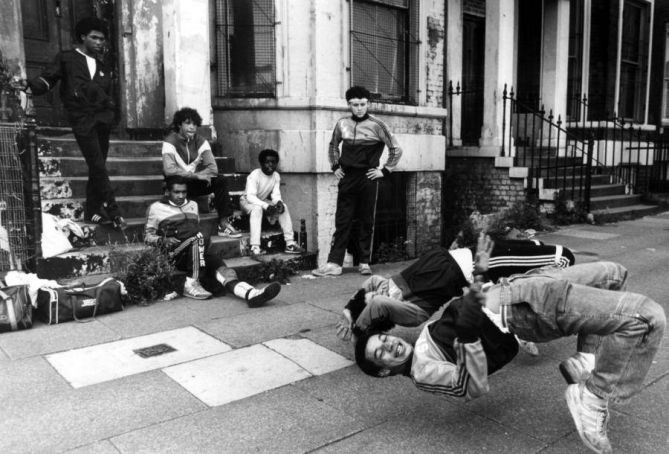Breakdancing makes its Olympic debut in Paris 2024
Break dance has become an Olympic sport, with a debut at the Paris 2024 Olympics.
The subject has been greeted with much enthusiasm, especially by those who have been practicing the sport all their lives. Breakdancing, or breaking, requires passion, concentration, energy, freedom of movement and expression, and physical acumen, all attributes of Olympic sports.
But how was this sport born? And what are the moves and the rules behind each challenge and who are the champions? Red Bull BC One, the largest and most prestigious international one-on-one breaking competition, has developed a guide to discover the fundamentals of this incredible discipline.
The Origins of Breakdancing

The origins of breaking date back to the early 1970's, when in the South Bronx, New York, Hip Hop street culture emerged. Through the rhythm of funk, disco and soul music, boys and girls found themselves in the streets dancing to the scratches of the first DJs, giving rise to a new form of expression that would soon conquer the world.
Hip Hop culture is composed of four sub-genres closely related to each other: Djing, MCing, Graffiti and Breaking.
The Pillars of Breakdancing: Toprock, Footwork, Powermoves, Freezes
According to experts on the history, breaking is a complex discipline, rich in cultural motivation and impulse, which revolves around four fundamental elements for the creation of the performances: Toprock, Footwork, Powermoves and Freezes.
Toprock
The Toprock is the calling card of every breaker, the intro of every performance and consists of a series of moves that distinguish the style of each boy or girl. It is based on a mix of coordination, flexibility and rhythm. The Toprock is performed standing up, before the breaker moves on to their next moves, as a way of presenting themselves to the judges and opponents.
Footwork
Footwork is the heart of breaking, the category that includes the use of hands and feet to perform spectacular moves on the ground, making circular movements. Characterized by quick and agile leg movements, Footwork is often used in breaking because it allows you to easily move from one element to another, and to compose new moves.
Powermoves
Powermoves are the most acrobatic and spectacular moves in breaking, and include jumps, somersaults, and all those spinning moves that are done while balancing on your head. Powermoves generally follow Toprock and Footwork, and are the stars of every performance because they leave the audience breathless.
Freezes
Freezes are the surprise element of the Battle, and as the term says, are moments when the b-boy or b-girl 'freeze', or puase in a certain position, after having done a spectacular move, such as a handstand, or a somersault. Freezes add an important scenic element to the performance as they occur as unexpected moments between powermoves, and allow time for the audience to admire the incredible moves they have just performed.
The competitors of a Breakdancing Battle: The B-boys and B-girls
The champions of this sport are the b-boys and b-girls, short for break-boys and break-girls, the dancers originally born on the streets in the 1970s, and who have conquered the most prestigious stages in the world. The b-boys and b-girls go head-to-head in Battles, one-on-one challenges in which the breakers compete with power moves, freezes, footwork and toprock.
The one-on-one Battle was developed for global competitions by Red Bull BC One almost 20 years ago, and is the chosen method for the challenges that will animate the Paris 2024 Olympic Games.
In an increasingly lively scene, which has also spread to Italy, Red Bull BC One has recently crowned the World Champions, on the occasion of the World Finals 2020, staged in Salzburg. The Russian b-girl Kastet and the Japanese b-boy Shigekix are the new champions to beat, but there are many talents who over the years have helped to spread passion for this incredible discipline around the world.
Judges and Rules
The judges of the Battle are b-boys and b-girls who are well-known professionals in the breaking world. They have the arduous task of deciding who best combines style and personality. But in addition to these criteria, technique, execution, originality and coherence are the main characteristics a judges will evaluate
A good performance must therefore combine technical skills and style, what characterizes every self-respecting b-boy and b-girl. Each breaker has their own language that is expressed through a personal repertoire of moves and combinations.
Every year 16 of the best b-boys and b-girls from all over the world compete on stage at Red Bull BC One, to go head to head in 3 rounds in front of 5 selected judges. Whoever wins the most points from the judges wins the battle.
The Breaking Scene in Italy
There are Italian talents that over the years have animated the breaking scene, such as b-boy Cico, aka Marco Peruzzi, who put Italian breakdancing in the Guinness Book of Records thanks to his world records of 1990 and his windmill move.
One of the most promising names in Italy today is Alessandra Chillemi, a young b-girl born in 1999. At the age of 5, Alessandra tried the ballet world but immediately understood that tutus were not for her, so, at the age of 6, after seeing some b-boys practicing near the train station in Messina, she discovered the sport. Thus began her journey as a breaker in a Sicilian crew, the Marittima Funk Crew, which lead to her debut in an official competition at only 8 years old.
Does she have what it takes to bring home to Italy the first ever Gold Medal for Breakdancing in the 2024 Paris Olympic Games?








